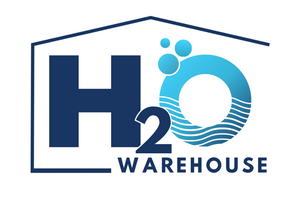Lead
Addressing Lead in Your Water: Risks, Detection, and Solutions
Lead contamination in drinking water poses significant health risks and requires immediate attention to safeguard public health and ensure access to safe and clean water. Understanding the sources, effects, detection methods, and solutions for lead contamination is crucial for homeowners and communities seeking to mitigate exposure and protect their families.
The Dangers of Lead Contamination:
- Health Impacts: Lead exposure, even at low levels, can have serious health consequences, particularly for children, infants, and pregnant women. Long-term exposure to lead can lead to neurological damage, developmental delays, cognitive impairments, and other adverse health effects. Additionally, lead exposure during pregnancy can affect foetal development and lead to birth defects.
- Sources of Contamination: Lead can enter drinking water through various sources, including lead pipes, plumbing fixtures, solder, and brass fittings commonly found in older homes. Corrosion of lead-containing materials, particularly in aging infrastructure, can release lead particles into the water supply, posing a significant health risk to consumers.
- Acute and Chronic Effects: Acute lead poisoning can result from short-term exposure to high levels of lead, leading to symptoms such as abdominal pain, nausea, vomiting, and neurological impairment. Chronic exposure to lower levels of lead over time can accumulate in the body and cause long-term health problems, making early detection and mitigation essential.
Detecting Lead in Water:
- Water Testing: Regular water testing is essential for detecting lead contamination in drinking water. Homeowners can request lead testing from certified laboratories or utilise DIY test kits to assess lead levels in their water supply. Testing should be conducted at the tap where water is consumed for accurate results.
- Visual Inspection: Visual inspection of plumbing fixtures, pipes, and solder joints for signs of corrosion or lead-based materials can provide clues about potential sources of lead contamination. Older homes built before the 1980s are more likely to have lead pipes or plumbing components.
Solutions for Lead Removal:
- Water Filtration: Installing certified lead-removal water filters, such as activated carbon filters or reverse osmosis systems, can effectively reduce lead levels in drinking water. These filtration systems are designed to capture lead particles and other contaminants, providing clean and safe water for consumption.
- Lead Pipe Replacement: In homes with lead service lines or plumbing, replacing lead pipes, fittings, and solder with lead-free materials is the most effective long-term solution for eliminating lead contamination. Professional plumbers or water utility companies can assist with lead pipe replacement projects.
- Flushing and Running Water: Flushing the tap for several minutes before using water for drinking or cooking can help reduce lead exposure by flushing out stagnant water containing lead particles. Running cold water, rather than hot water, is recommended to minimise the release of lead from plumbing fixtures.
Conclusion:
Lead contamination in drinking water presents serious health risks and requires proactive measures to detect and mitigate exposure. By understanding the sources, effects, detection methods, and solutions for lead contamination, homeowners can take steps to protect their families and ensure access to safe and clean water. Regular water testing, installation of lead-removal water filters, and lead pipe replacement initiatives are essential components of comprehensive lead mitigation strategies. Collaborative efforts between homeowners, communities, and regulatory authorities are necessary to address lead contamination and safeguard public health for future generations.
- Choosing a selection results in a full page refresh.

